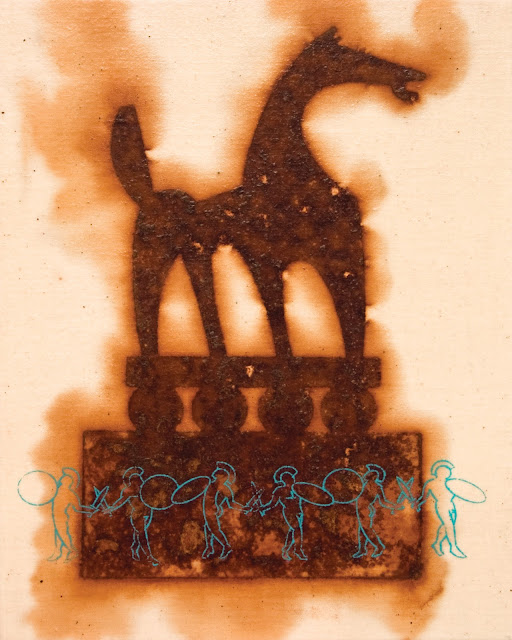The Deeds of Jason

The Deeds of Jason Rust Print (9 1/4 x 27 3/4 in.) In many a song my past deeds have been sung, And these my hands that guided Argo through The blue Symplegades, still deeds may do. For now the world has swerved from truth and right, Cumbered with monsters, empty of delight, And “midst all this what honor I may win, That she may know of and rejoice therein, And come to seek me, and upon my throne May find me sitting, worshipped, and alone. From "The Life and Death of Jason" by William Morris My Rust Print The Deeds of Jason was made by rusting cut steel plates to muslin.

